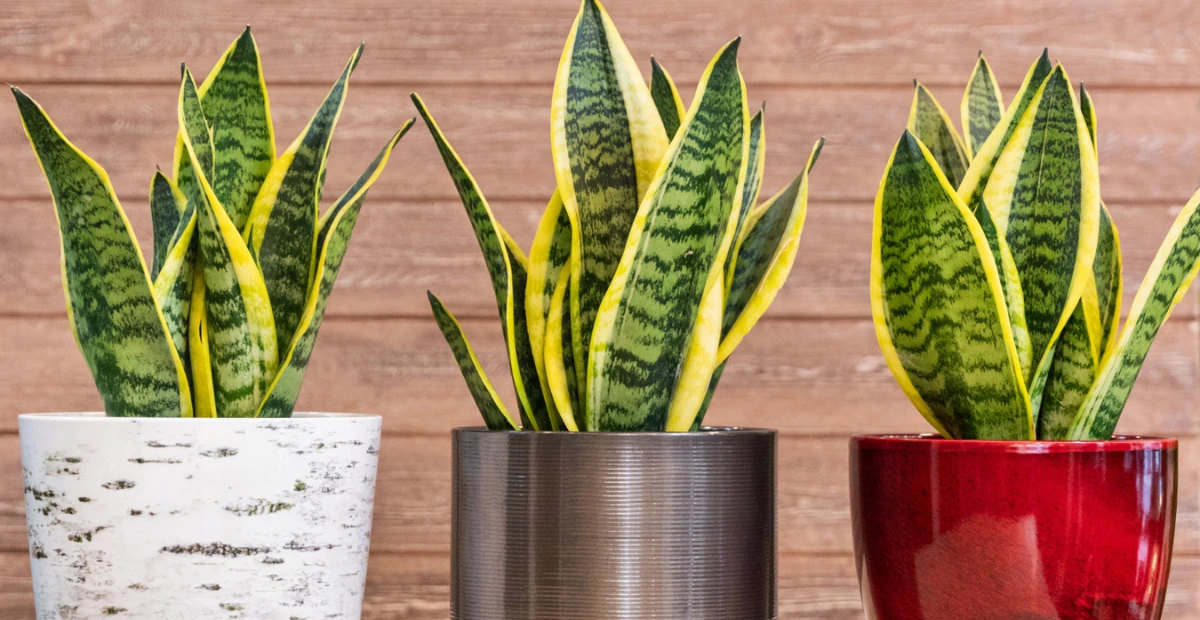Introduction: Bringing Green Serenity Into Your Home
If you’re looking for a plant that adds a touch of elegance, purifies the air, and thrives on little attention, the planta lengua de suegra (also known as the snake plant) is an excellent choice. With its tall, sword-like leaves and its reputation for resilience, it’s no wonder this plant has become a staple in many homes and offices. Whether you’re a seasoned plant parent or a complete beginner, caring for a planta lengua de suegra is straightforward, provided you understand a few key aspects of its care.
advertisement
For many, incorporating plants into the home isn’t just about decor — it’s about fostering a sense of tranquility and connection with nature. Imagine coming home after a long day, greeted by the fresh green leaves of your planta lengua de suegra, purifying the air and creating an atmosphere of calm. This plant isn’t just beautiful, it also offers some powerful benefits, such as improving indoor air quality, boosting your mood, and enhancing your overall well-being.
In this comprehensive guide, we will take you through everything you need to know about caring for your planta lengua de suegra, ensuring it thrives and continues to brighten your space for years to come.
Table of Contents
What is a Planta Lengua de Suegra?
Before we dive into care tips, let’s take a moment to understand the planta lengua de suegra.
advertisement
Scientific Name and Common Names
The planta lengua de suegra is scientifically known as Sansevieria trifasciata, though it is commonly called the snake plant, mother-in-law’s tongue, or viper’s bowstring hemp. Regardless of what you call it, this plant is loved for its upright, narrow leaves, which typically feature a combination of green and yellow stripes. These leaves grow in clusters, giving the plant a striking appearance, which makes it ideal for modern and minimalist interiors.
Origin and Appeal
Native to West Africa, the snake plant has adapted to a variety of climates and growing conditions, making it incredibly versatile and low-maintenance. Unlike some other houseplants, it doesn’t require constant attention and can tolerate less-than-ideal conditions. This is why it has gained popularity worldwide, particularly in urban environments where low-maintenance plants are in high demand.
Choosing the Right Environment for Your Planta Lengua de Suegra
advertisement
In order to help your planta lengua de suegra thrive, it’s important to provide the right environment. Let’s look at the essential conditions your plant needs.
Light Requirements: How Much Sun Does Your Snake Plant Need?
One of the reasons the planta lengua de suegra is so popular is its adaptability to various lighting conditions. Whether you have a bright, sun-soaked room or a space with little natural light, your snake plant will find a way to grow.
- Ideal Lighting: Snake plants thrive in indirect light, which makes them perfect for rooms with east- or west-facing windows. If you place it near a south-facing window, make sure it’s shielded from the direct midday sun, as this can cause the leaves to burn.
- Low-Light Tolerance: Snake plants are also highly tolerant of low-light environments, which means they can survive in dimly lit corners or offices with fluorescent lighting. However, while the plant will survive in these conditions, it may not grow as quickly or develop its full potential.
advertisement
Pro Tip: If your snake plant seems to be stretching towards the light or the leaves are becoming pale, it might be an indication that it needs more light. Consider moving it to a brighter spot or supplementing natural light with a grow light.
Temperature and Humidity: Finding the Sweet Spot
Temperature and humidity play a significant role in keeping your snake plant healthy.
- Temperature: The planta lengua de suegra prefers temperatures between 60°F and 85°F (15°C to 29°C). This makes it perfect for indoor environments, as most homes maintain a similar temperature range.
- Humidity: One of the benefits of a planta lengua de suegra is that it is highly adaptable to different humidity levels. It can tolerate dry indoor air, which is common in many homes, especially during winter when indoor heating is on. However, in extremely dry conditions, you might want to occasionally mist the leaves or place a humidity tray near the plant.
Pro Tip: Avoid placing your snake plant near heaters, air conditioners, or vents, as sudden temperature changes can stress the plant.
Watering Your Planta Lengua de Suegra: The Dos and Don’ts
advertisement
While the planta lengua de suegra is known for being low-maintenance, one of the most important aspects of caring for it is getting the watering right. Overwatering is a common mistake, and it’s something that can be detrimental to your plant’s health.
How Often Should You Water a Snake Plant?
Snake plants are succulents, which means they store water in their leaves. This allows them to go without water for extended periods of time, making them incredibly drought-tolerant. Here’s how to strike the right balance when watering your plant:
- Watering Schedule: During the warmer months (spring and summer), you should water your planta lengua de suegra once every 1-2 weeks, depending on how dry the soil feels. In winter, when the plant enters a dormant phase, watering should be reduced to once every 3-4 weeks.
- Check the Soil: Before watering, always check the moisture level of the soil by sticking your finger about 2 inches into the soil. If it feels dry, it’s time to water. If it’s still moist, wait another few days before checking again.
The Risks of Overwatering
Overwatering is one of the most common mistakes people make when caring for a snake plant. The plant’s roots are susceptible to rot when the soil remains too moist. To avoid this, ensure that your pot has drainage holes, and never let the plant sit in water.
Pro Tip: If you notice the leaves of your snake plant becoming yellow or mushy, it’s a sign that you may be overwatering. In such cases, it’s crucial to remove the plant from its pot, inspect the roots, and trim any rotten areas before repotting in fresh, well-draining soil.
advertisement
Soil and Potting Needs: Setting Up for Success
To create the ideal home for your planta lengua de suegra, selecting the right soil and pot is essential. Here’s what you need to know:
Best Soil for Planta Lengua de Suegra
The key to growing a healthy snake plant is ensuring the soil is well-draining. Snake plants are susceptible to root rot if they sit in wet soil for too long, so it’s important to use a soil mix that allows water to flow through quickly.
- Cactus or Succulent Mix: A commercial cactus or succulent mix is ideal for snake plants. If you prefer to mix your own, add sand or perlite to a standard potting mix to improve drainage.
- Soil pH: The plant prefers slightly acidic to neutral soil, with a pH of 6.0 to 7.5.
Choosing the Right Pot for Your Snake Plant
When selecting a pot, keep in mind that snake plants don’t need overly large containers. A pot that’s just a couple of inches larger than the root ball will suffice, as this helps prevent the roots from becoming waterlogged.
- Drainage: Always choose a pot with drainage holes to allow excess water to escape. This prevents water from collecting at the bottom of the pot, which can lead to root rot.
- Material: Pots made of terracotta are ideal because they allow for better airflow and moisture evaporation. However, plastic pots can also work as long as they have proper drainage.
Fertilizing Your Planta Lengua de Suegra: When and How to Feed
advertisement
While snake plants are not heavy feeders, providing them with occasional nourishment can help promote healthy growth. Here’s how to fertilize your planta lengua de suegra effectively:
When to Fertilize
- Growing Season: The best time to fertilize your snake plant is during the growing season, which runs from spring through summer. During this time, the plant is actively producing new leaves and will benefit from the nutrients provided by fertilizer.
- Dormant Season: In fall and winter, snake plants go into dormancy, meaning they do not require fertilizer. Over-fertilizing during this time can lead to nutrient buildup, which can damage the plant.
How to Fertilize
- Fertilizer Type: A balanced, water-soluble fertilizer diluted to half strength is sufficient for a snake plant. You can also use a slow-release fertilizer.
- Frequency: Apply fertilizer once a month during the growing season. Avoid fertilizing more frequently, as this could lead to fertilizer burn.
Common Issues with Planta Lengua de Suegra and How to Fix Them
Even though the planta lengua de suegra is quite hardy, it’s not immune to occasional issues. Below are some common problems you might encounter and how to address them:
Yellowing Leaves: What’s the Cause?
Yellowing leaves can be caused by overwatering, which leads to root rot. If the leaves turn yellow and feel soft or mushy, it’s time to assess the health of the roots.
advertisement
- Solution: Allow the soil to dry out, and ensure the pot has adequate drainage. If the problem persists, it might be necessary to repot the plant in fresh soil.
Brown Tips on Leaves: How to Handle Dryness
Brown tips are often a sign of low humidity, dry air, or inconsistent watering.
- Solution: Keep the plant away from direct heat sources, increase humidity if necessary, and ensure you’re watering correctly.
Conclusion: Enjoy Your Thriving Planta Lengua de Suegra
By following the simple care tips outlined in this guide, your planta lengua de suegra will continue to thrive and beautify your home. Whether you’re a plant enthusiast or just starting your green journey, this resilient and low-maintenance plant will reward you with its striking appearance and air-purifying qualities.
Remember, the key to success with your snake plant is patience and consistency. With the right care, you’ll be rewarded with a healthy, vibrant plant that adds life and energy to your space.
Now that you know how to care for your planta lengua de suegra, it’s time to put these tips into practice. Enjoy your gardening journey, and share your success stories with friends and fellow plant lovers!
Call to Action: If you found this guide helpful, share it with fellow plant enthusiasts, and don’t forget to leave a comment below with any questions or additional tips you have about caring for the planta lengua de suegra! Your plant journey starts now — let your snake plant flourish with your care and attention.


